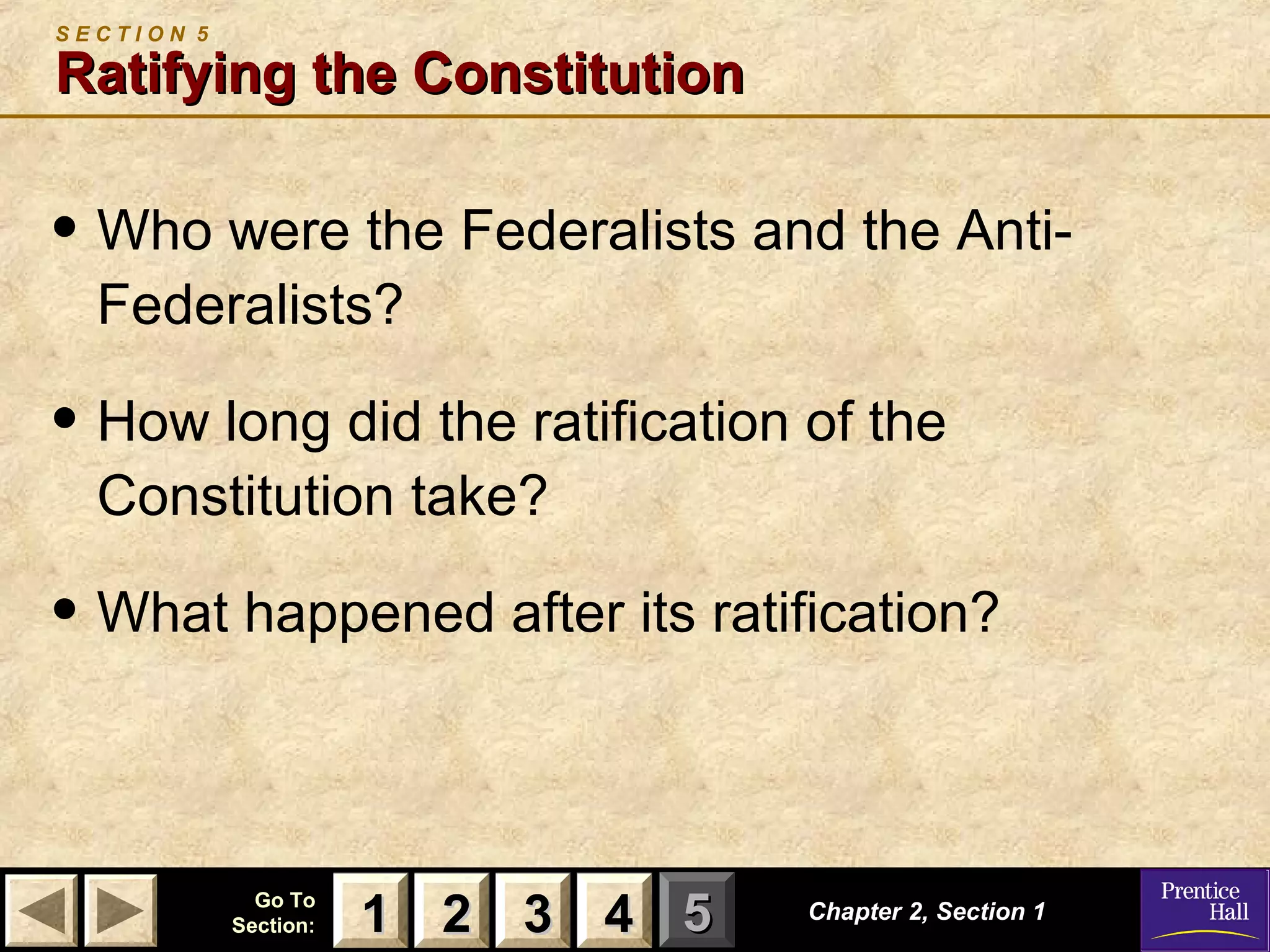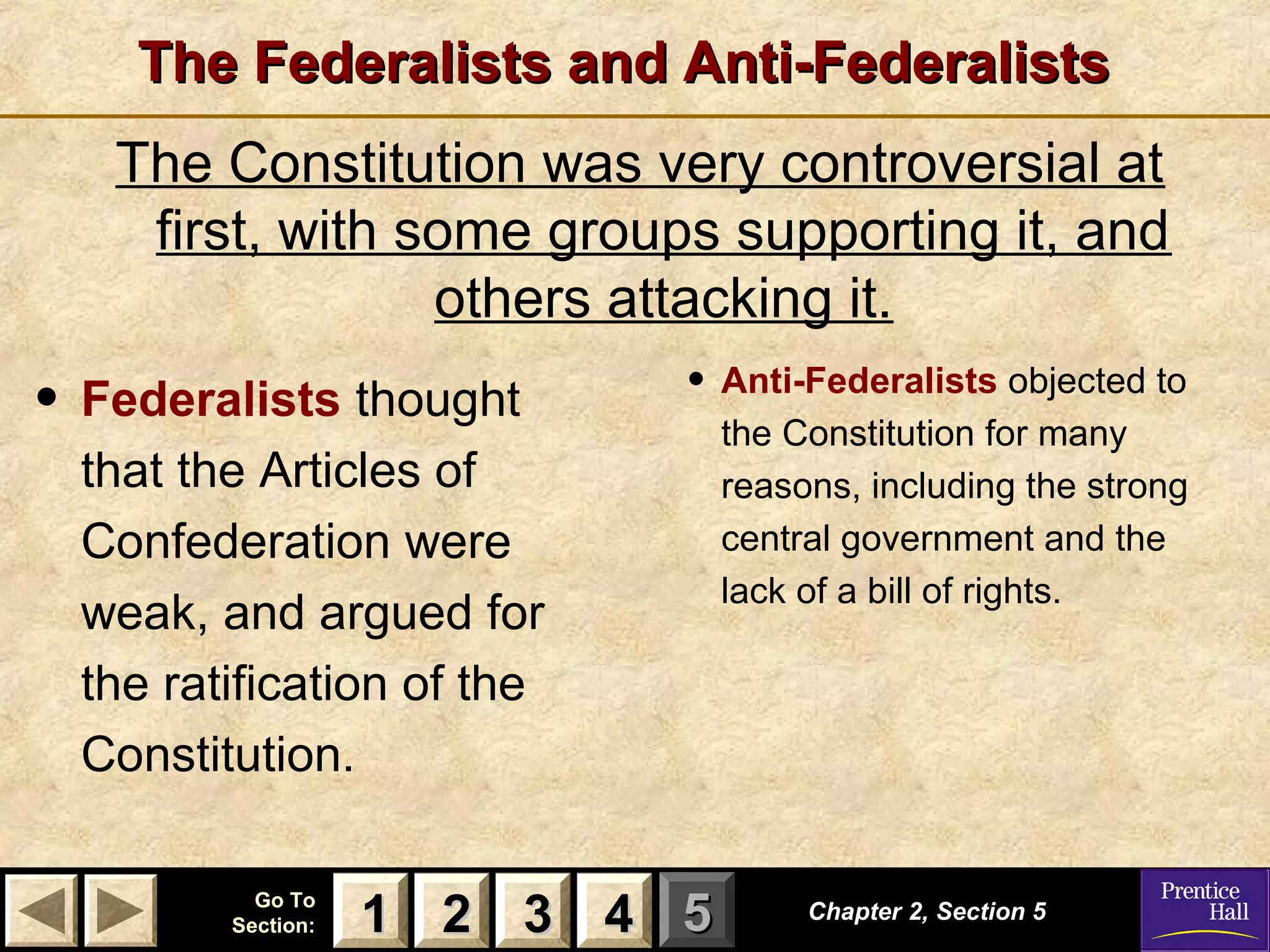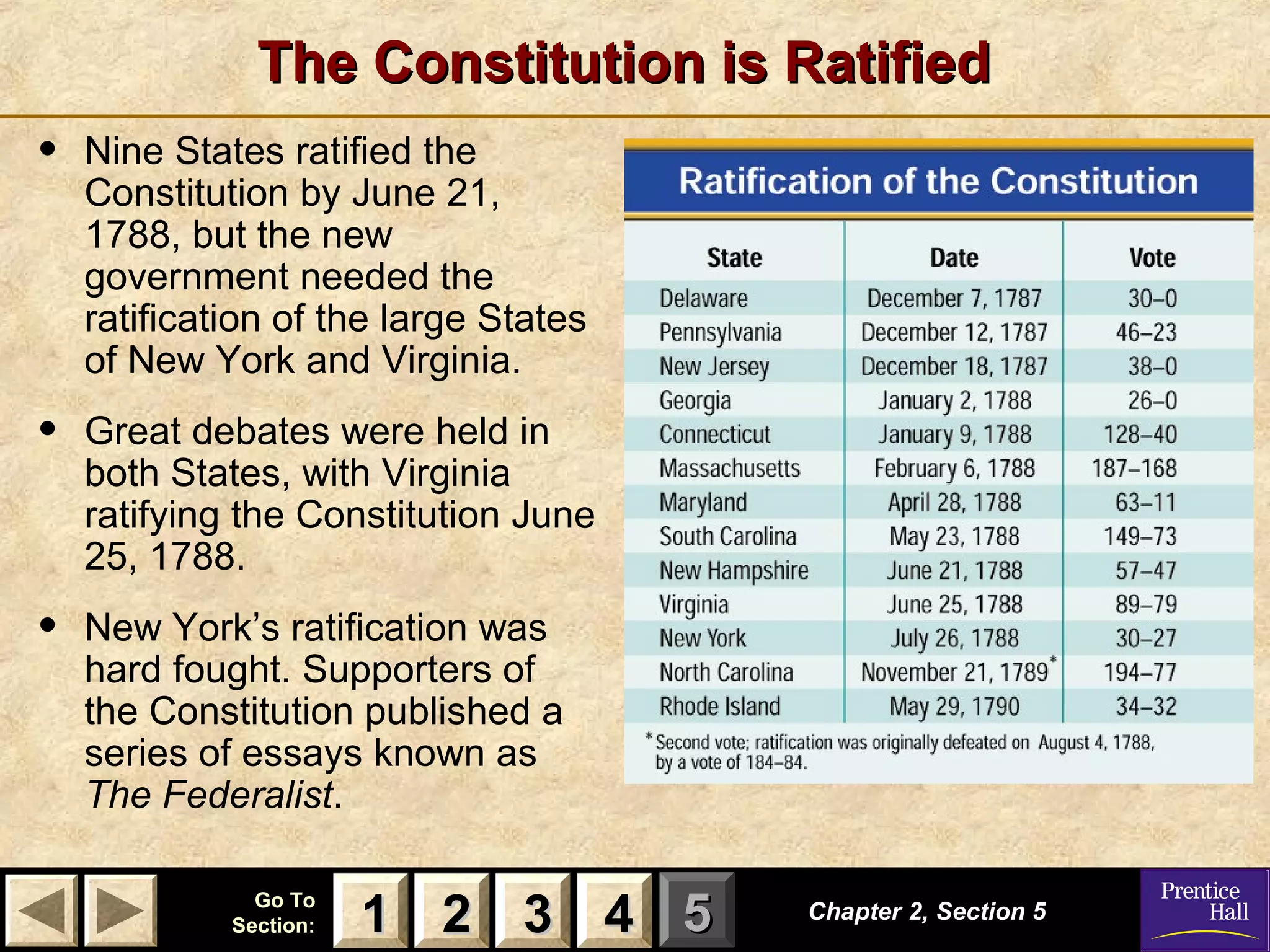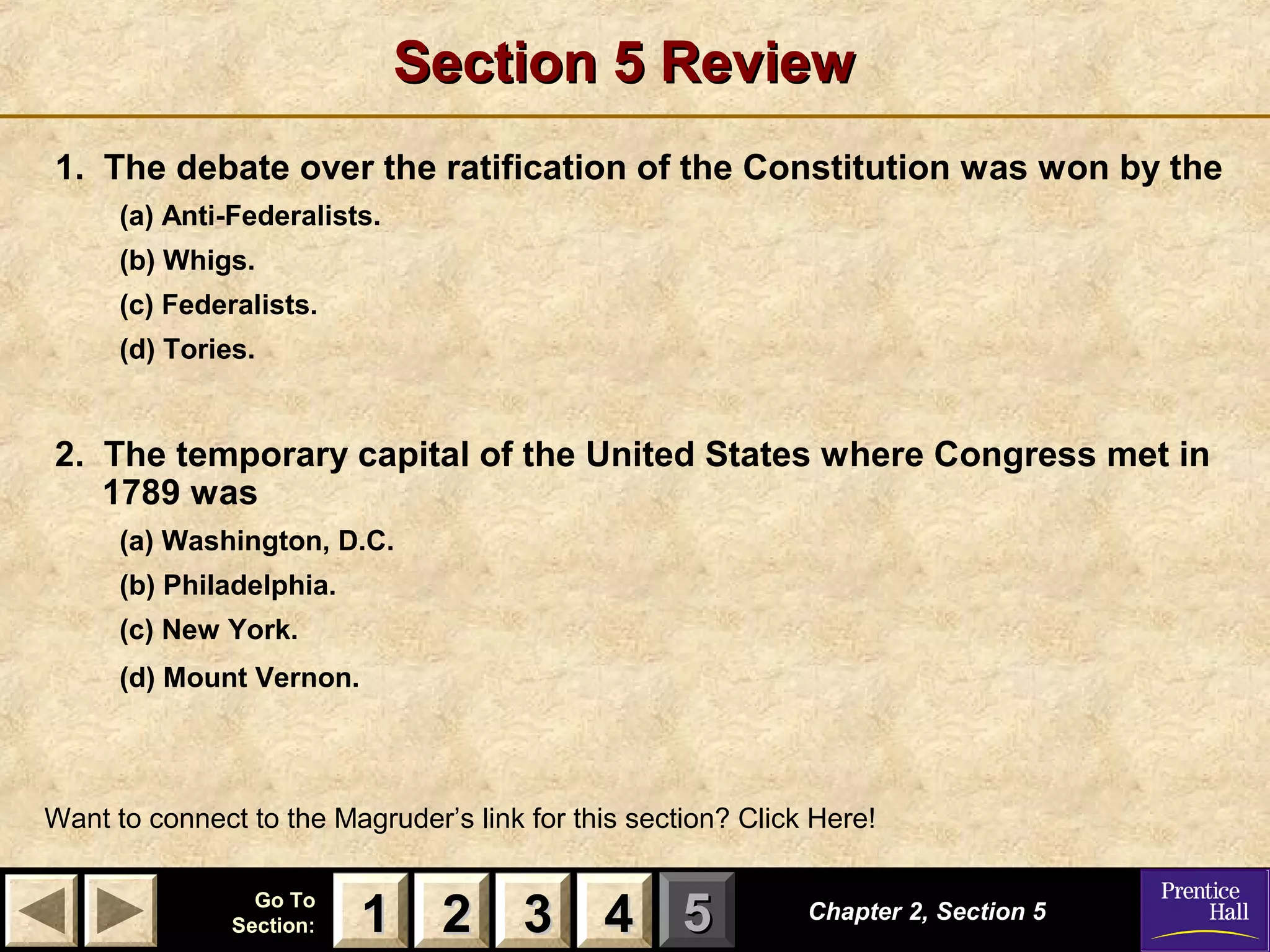The document summarizes Chapter 2 of Magruder's American Government textbook. Section 1 discusses the origins of American government, including the basic concepts of government brought by English colonists, important English documents that influenced the US system, and the three types of colonies. Section 2 covers the growing colonial unity, the Continental Congresses, American independence, and common features of early state constitutions. Section 3 explains the Articles of Confederation, weaknesses that led to the Critical Period, and calls for a stronger national government. Section 4 describes the Constitutional Convention, different plans debated, compromises reached, and influences on and reactions to the final Constitution. Section 5 discusses the Federalists and Anti-Federalists, the ratification process, and New

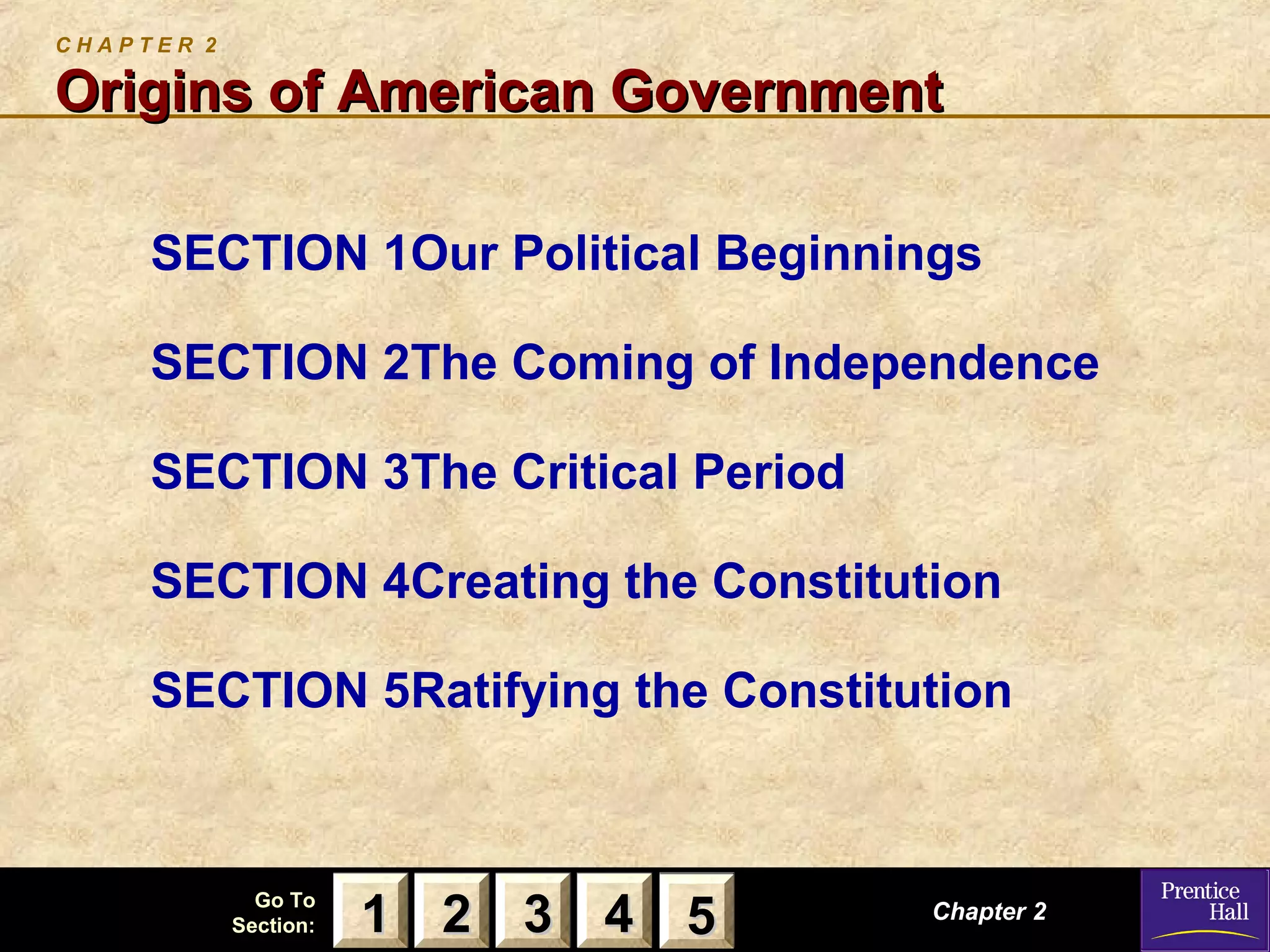
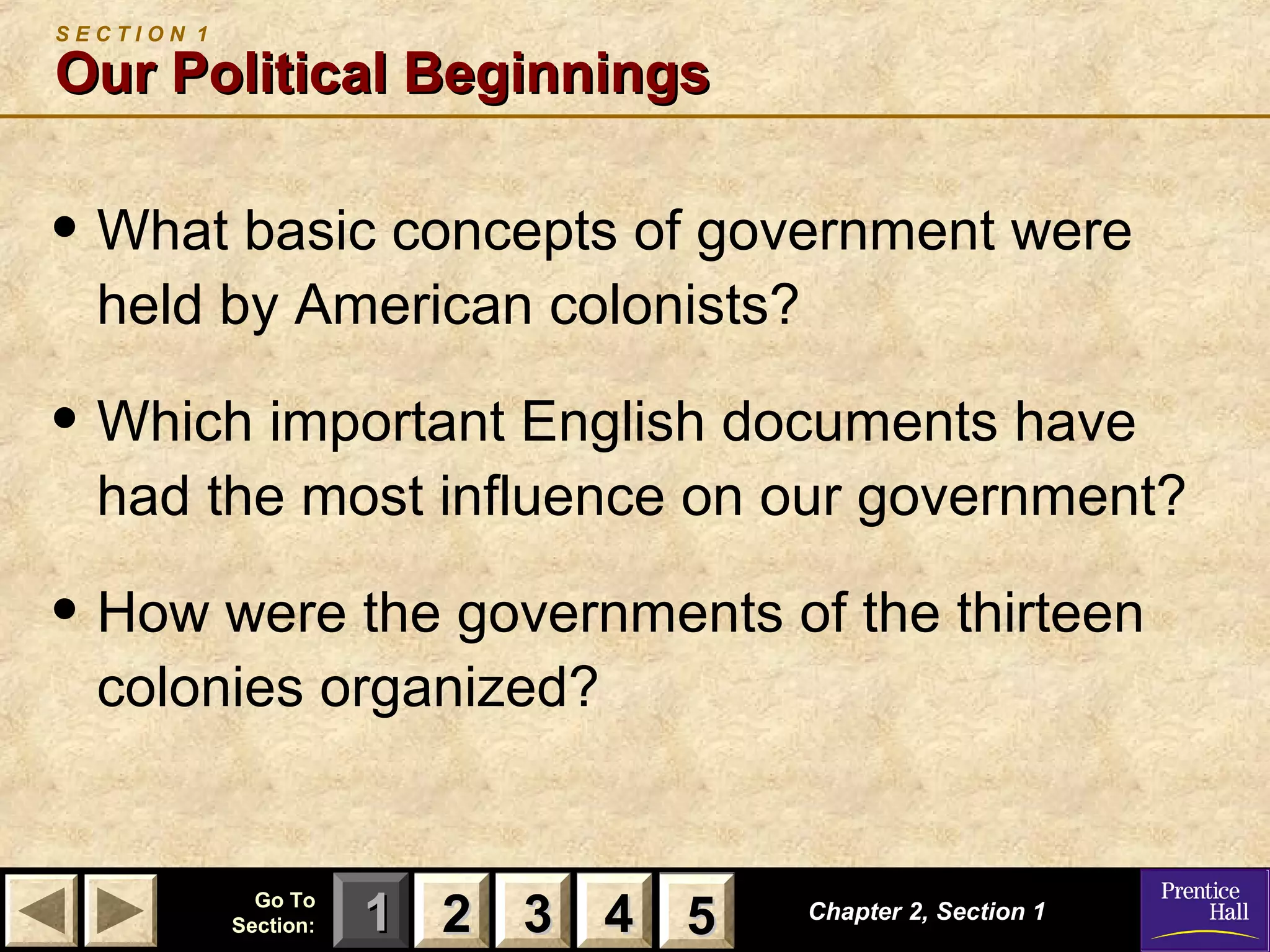

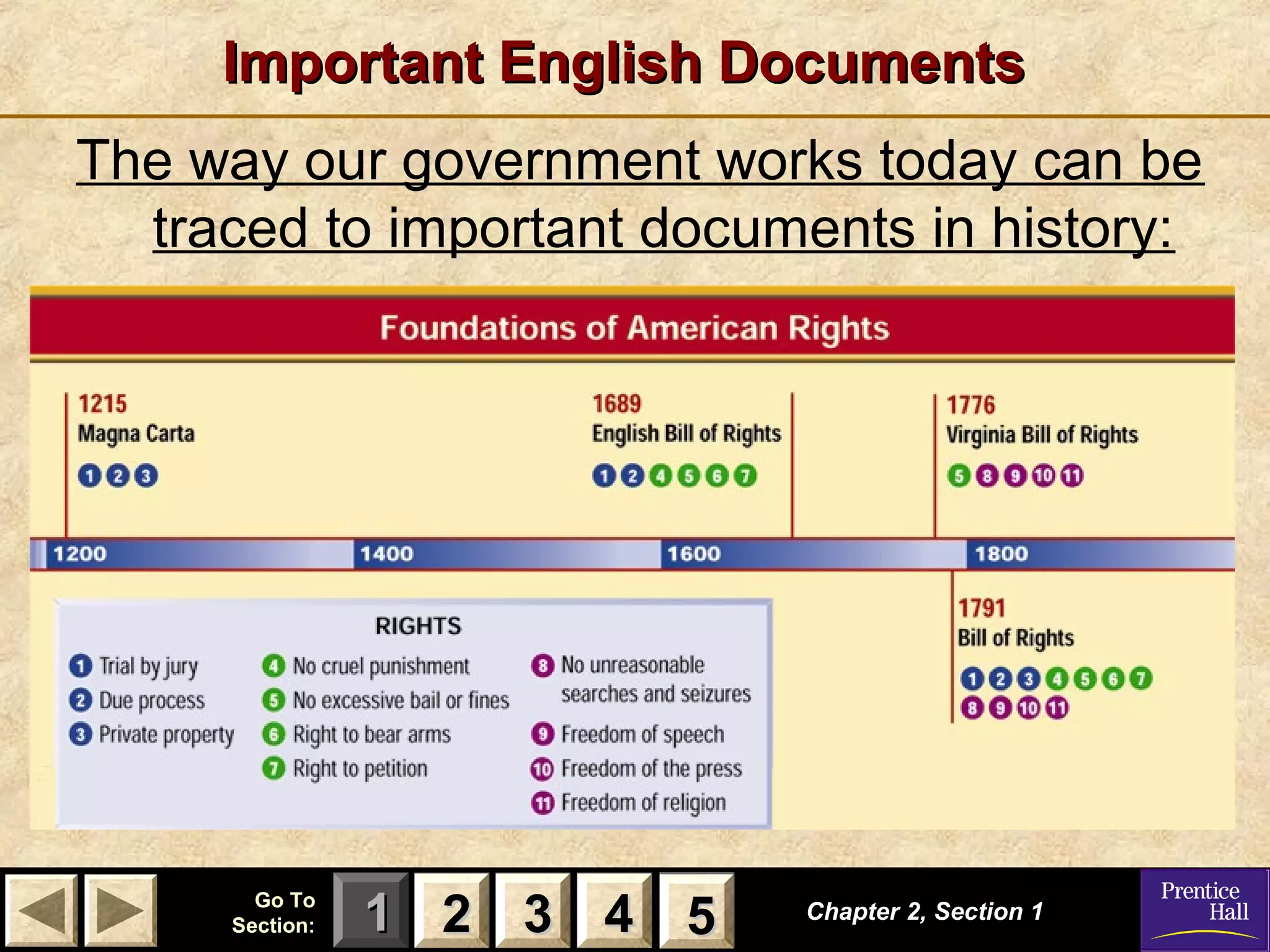
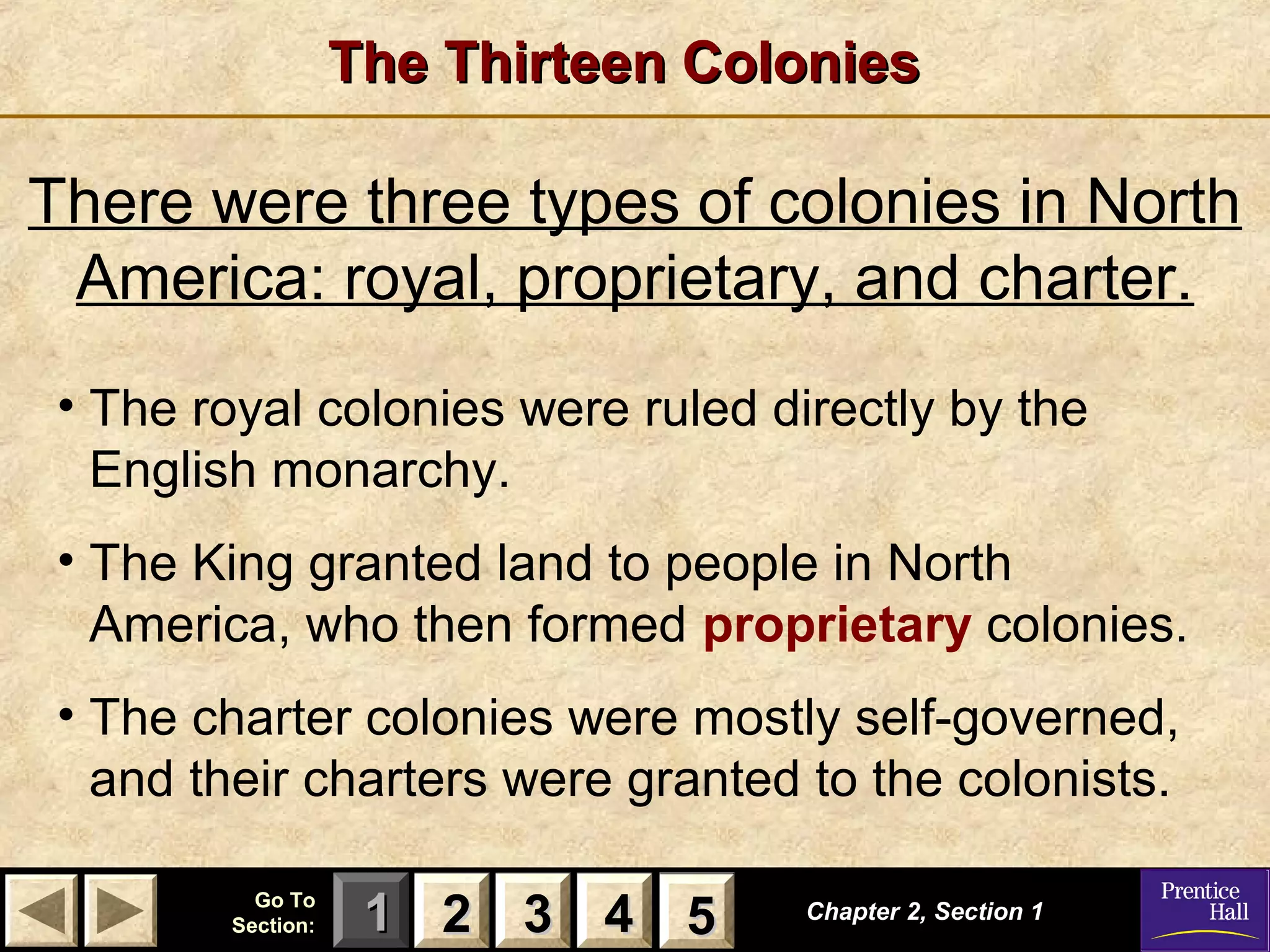

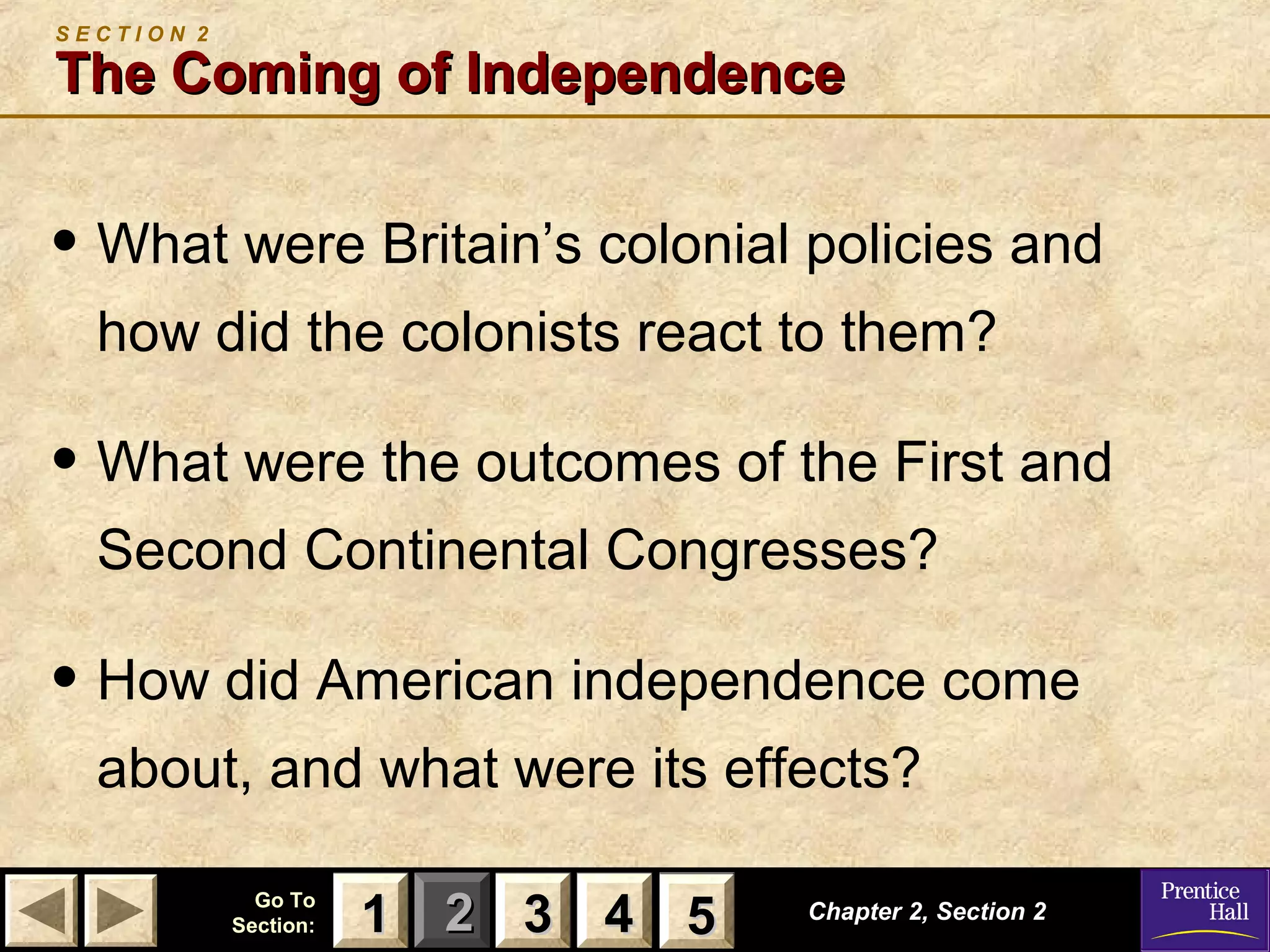
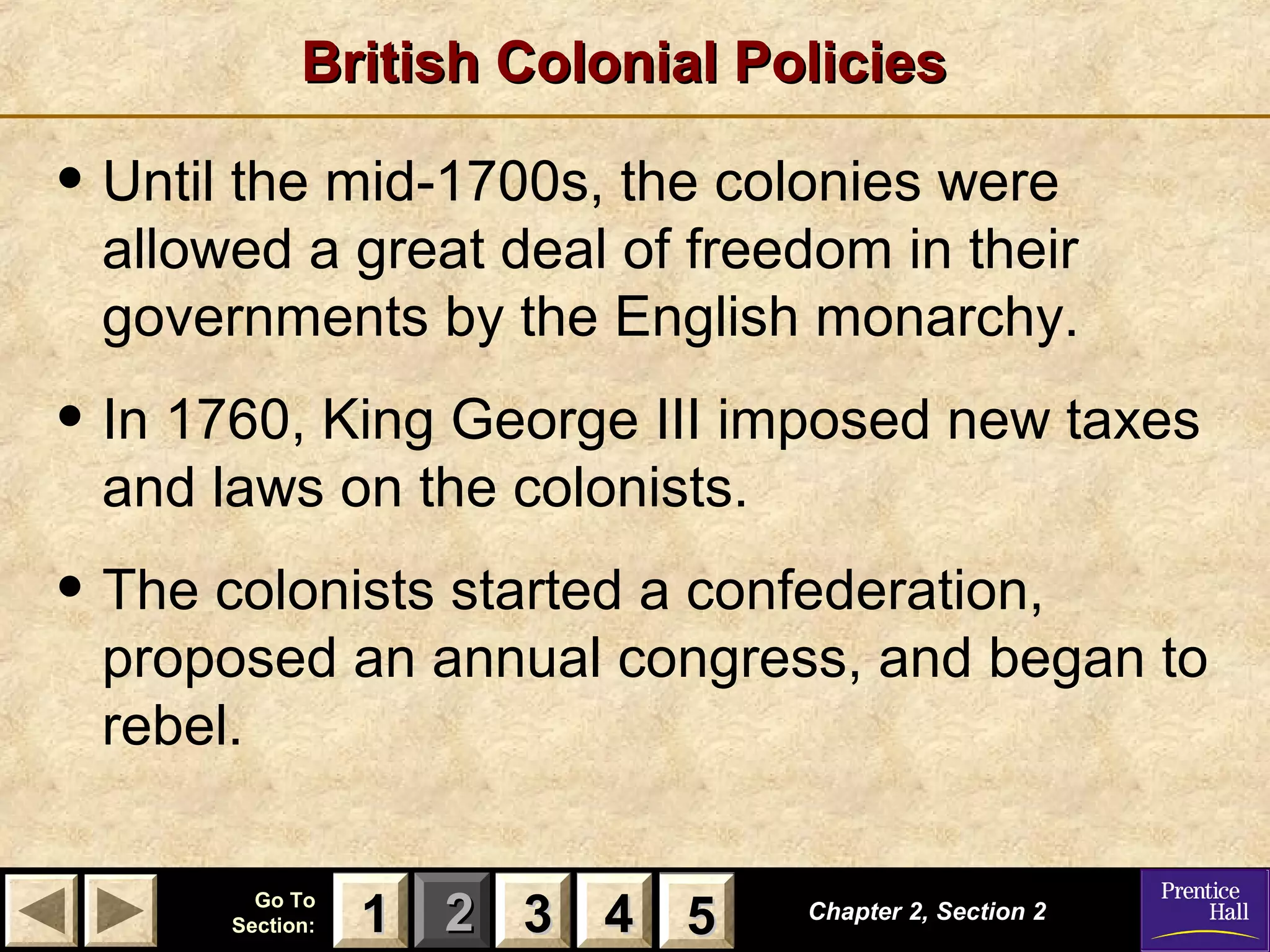


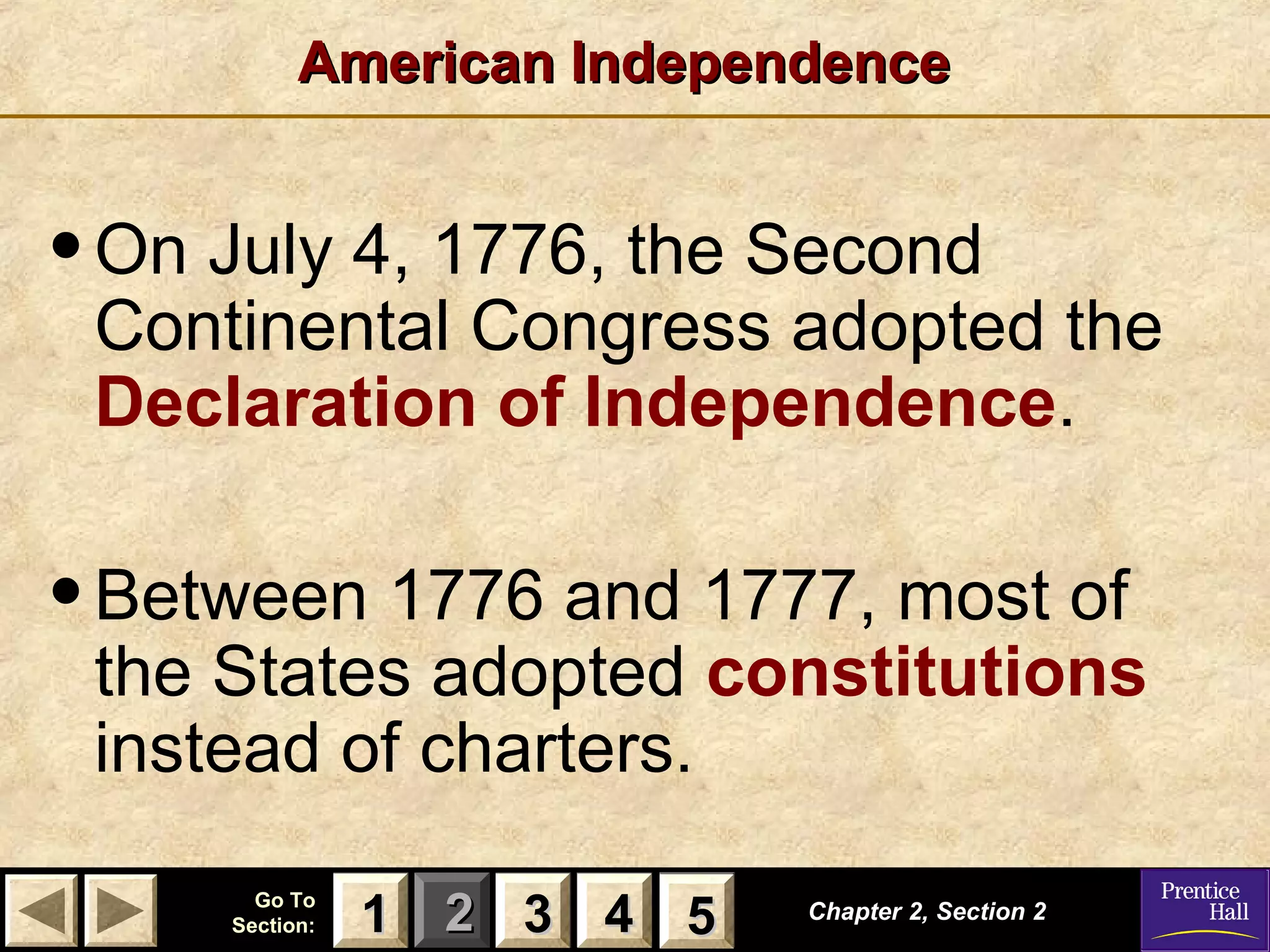

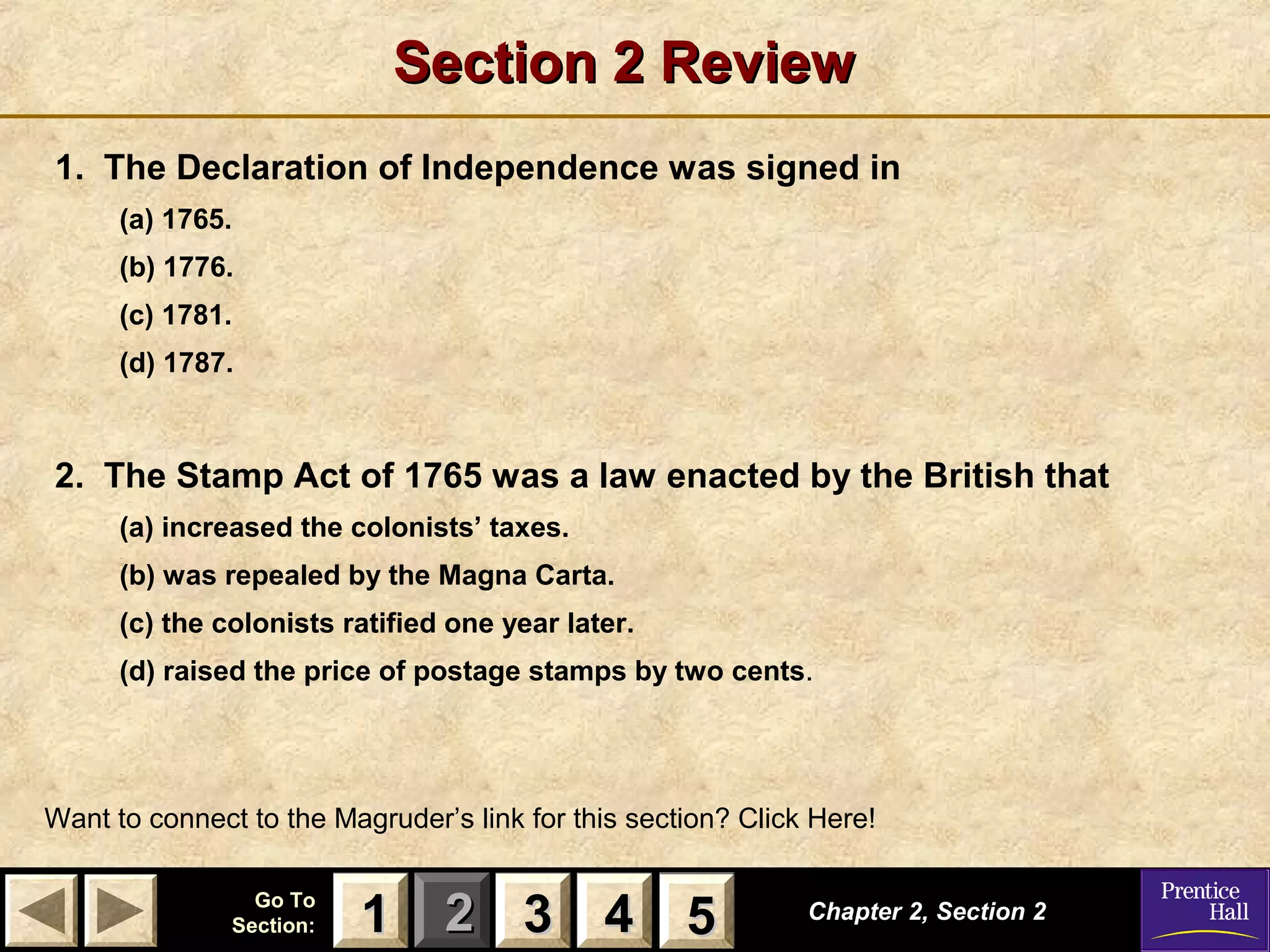
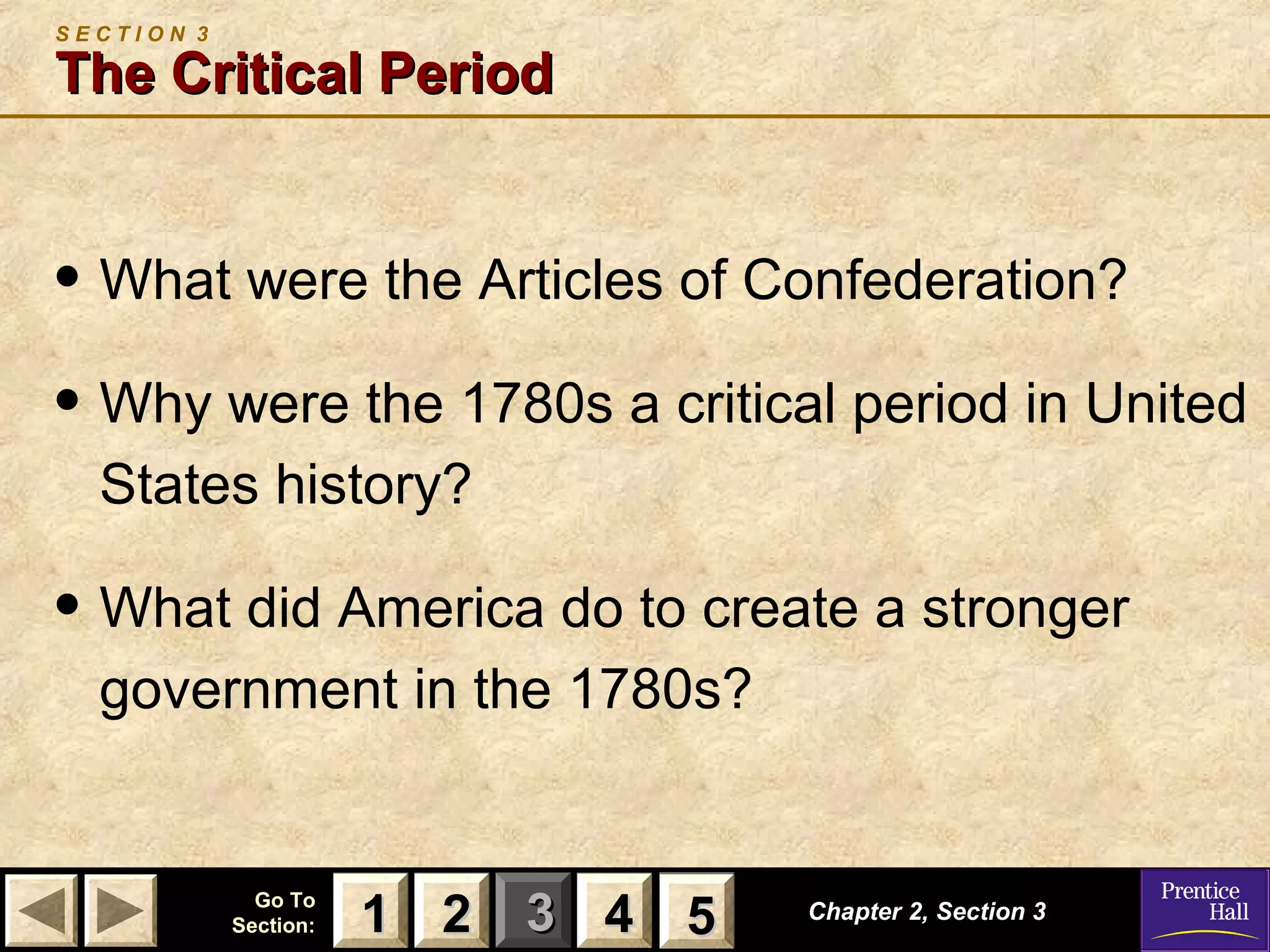

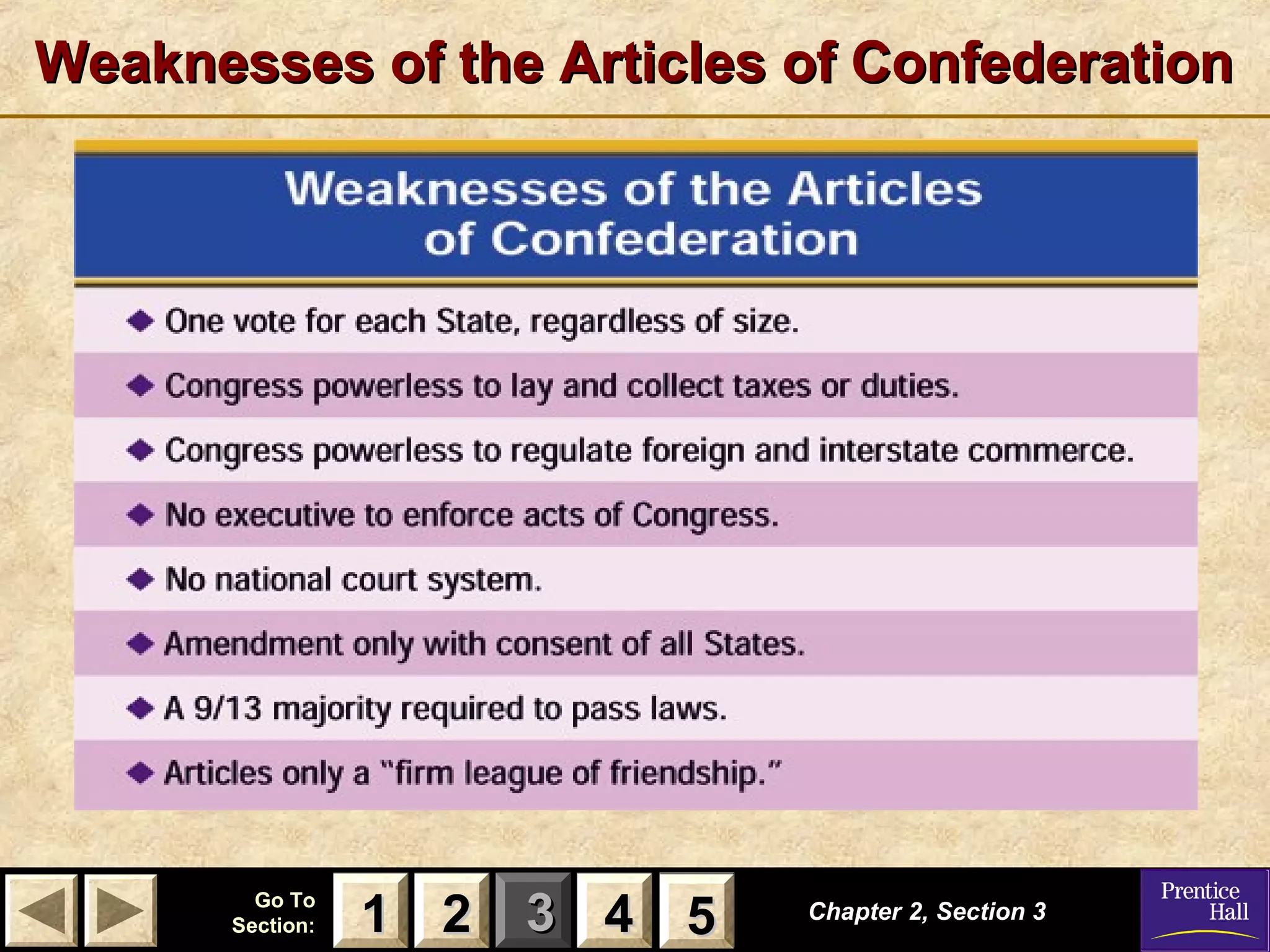

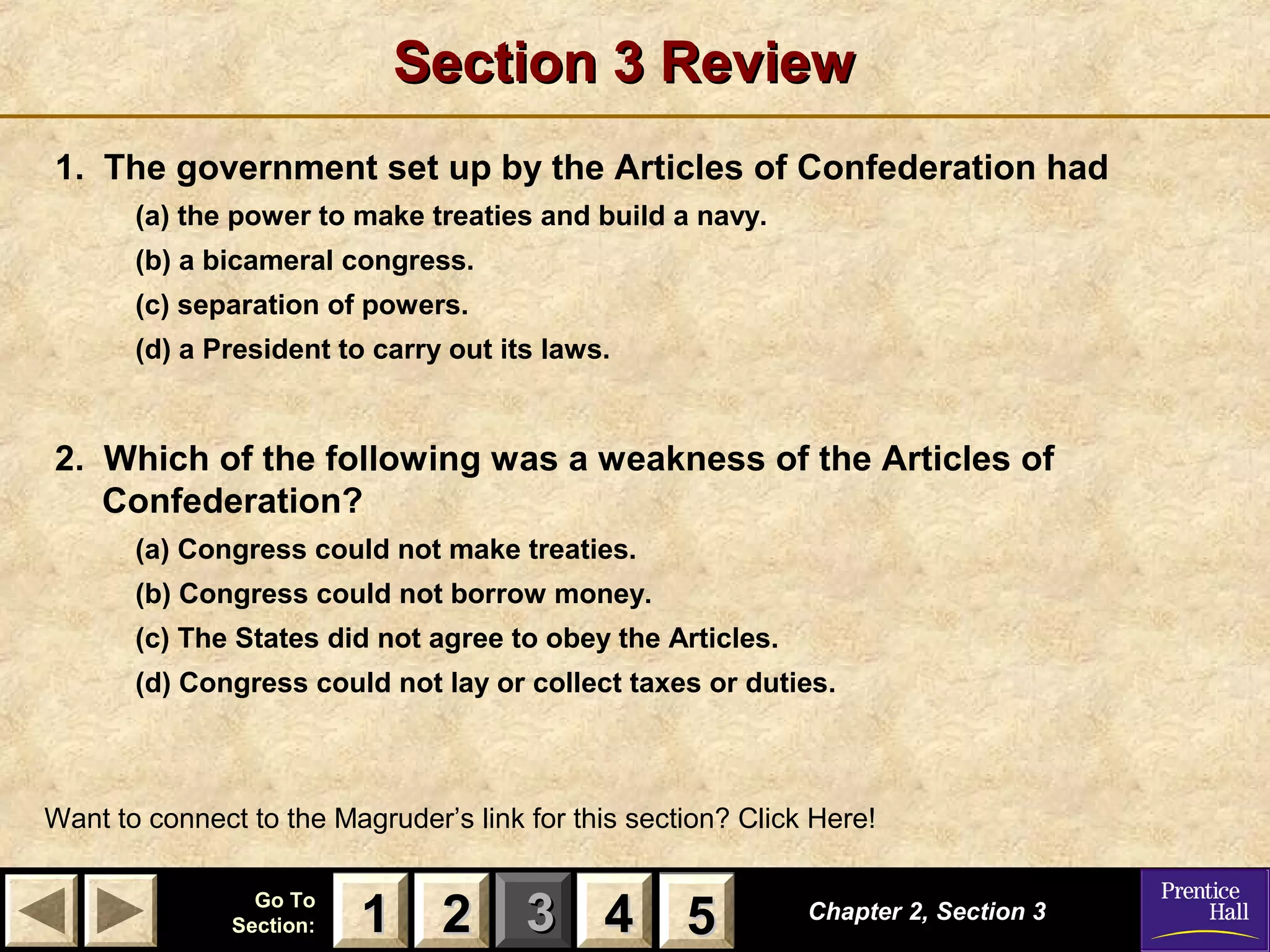
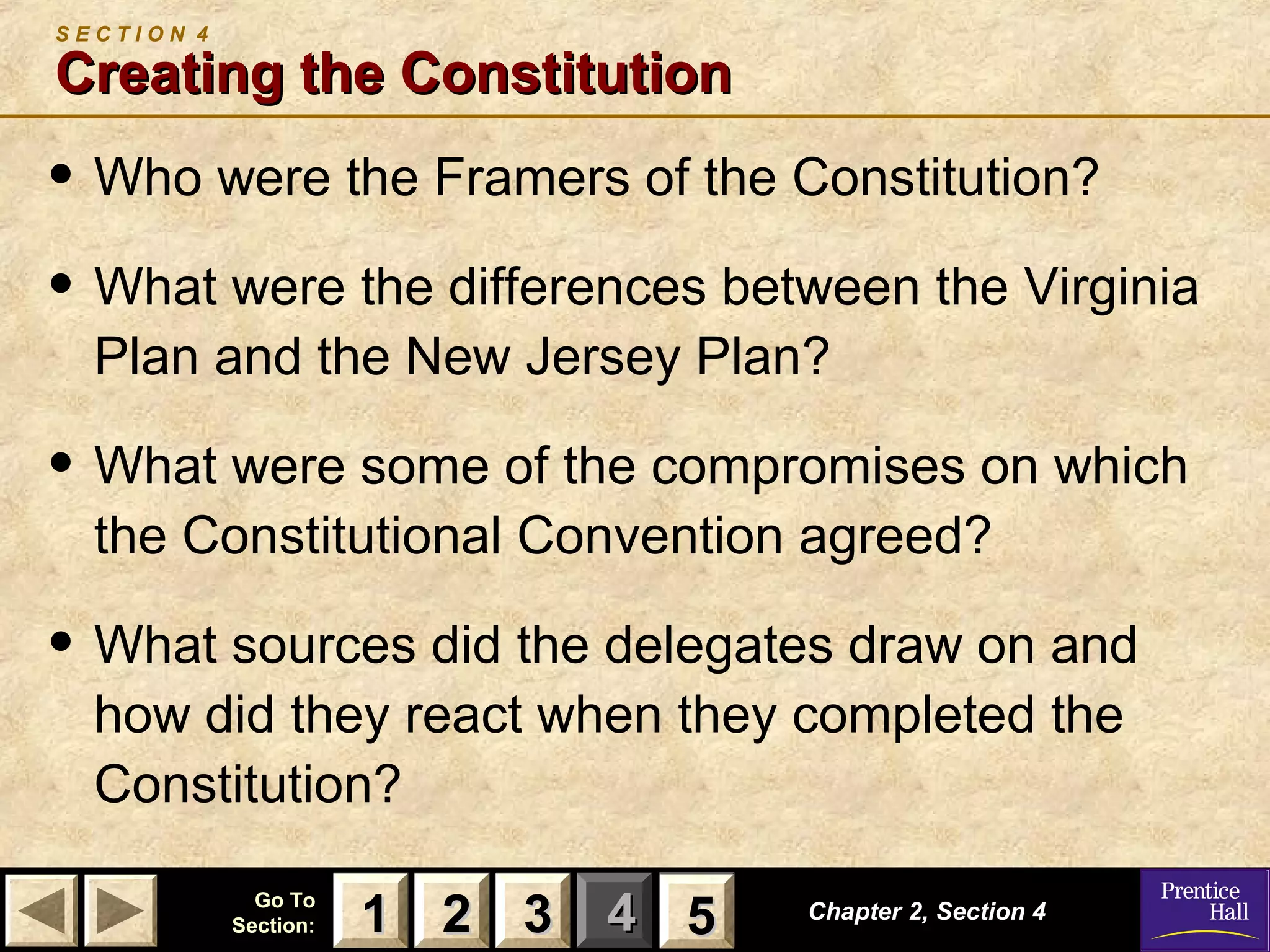
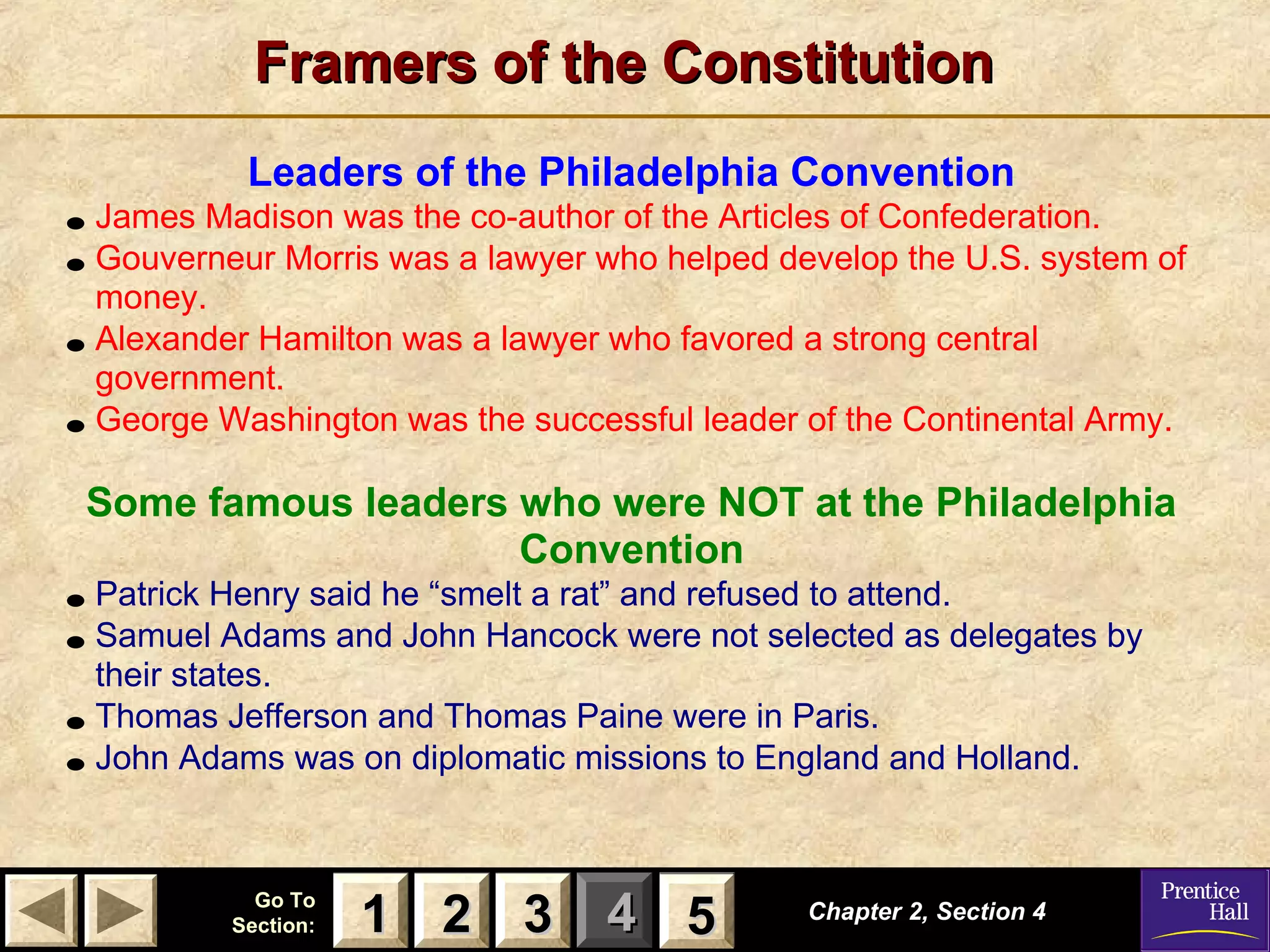
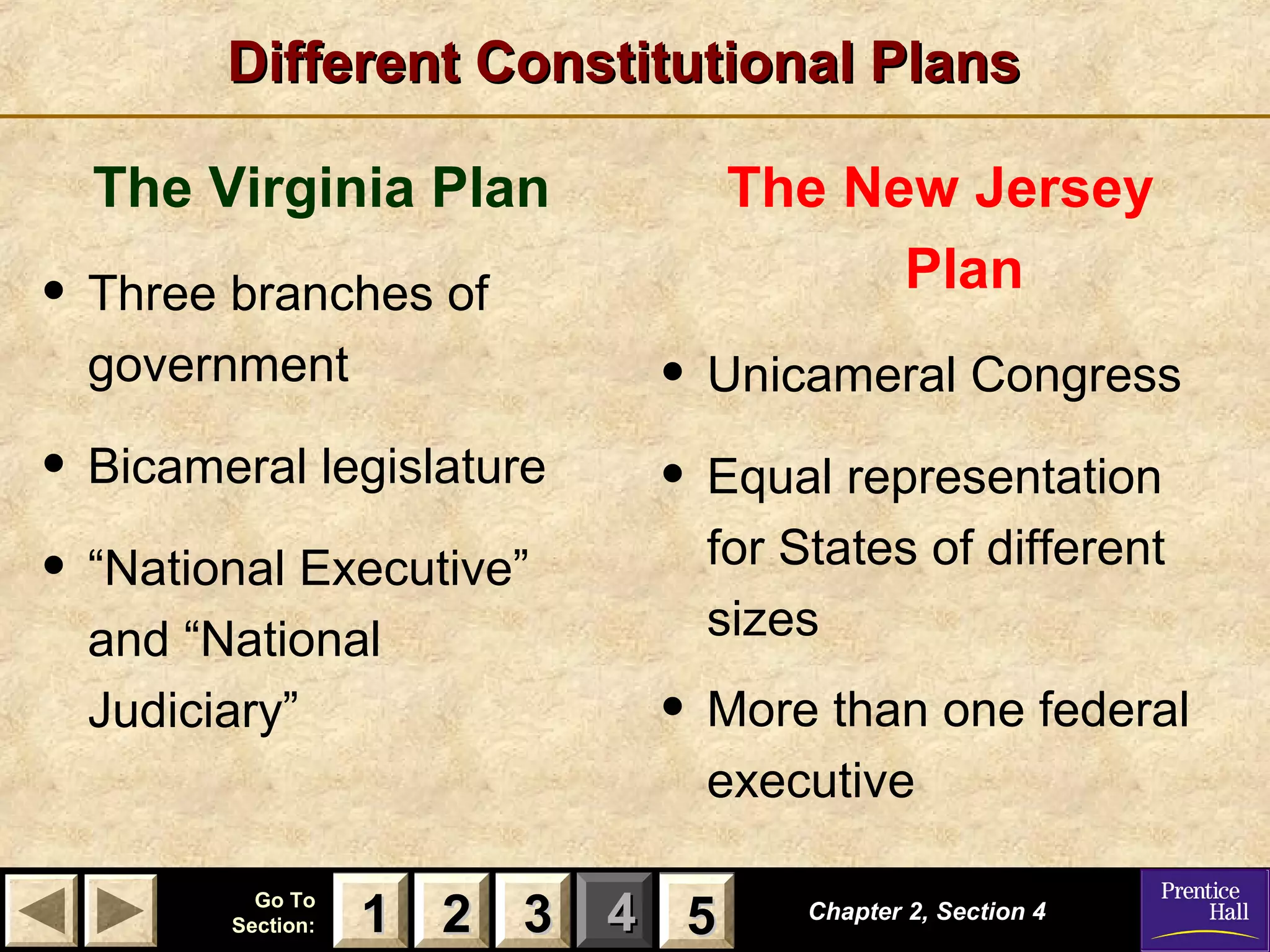
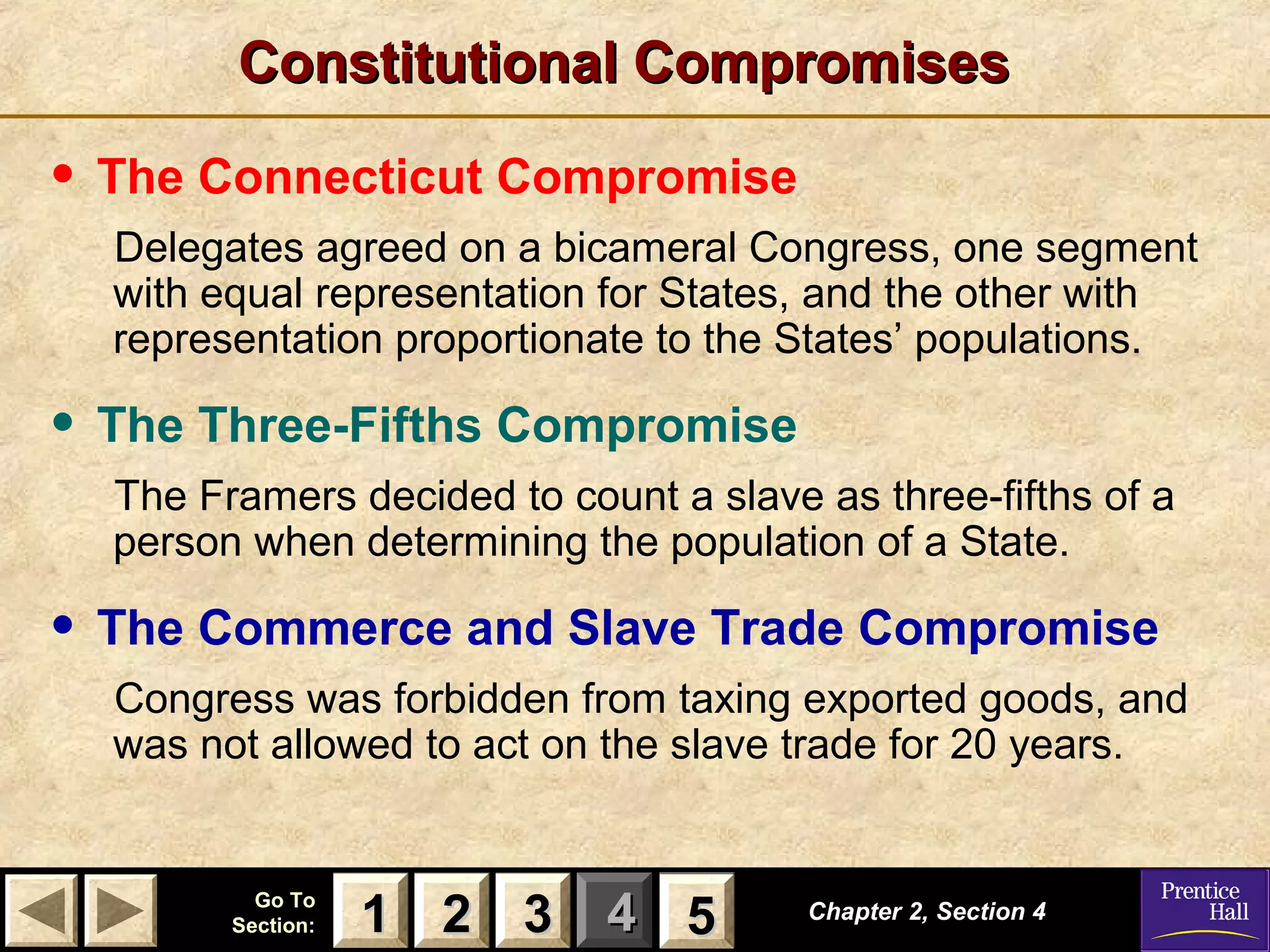
![11 22 33Go ToGo To
Section:Section: 44 55
Influences on and Reactions toInfluences on and Reactions to
the New Constitutionthe New Constitution
Influences
• The Framers were familiar
with the political writings of
their time, such as works by
Jean Jacques Rousseau and
John Locke.
• They also were seasoned,
variously, by the Second
Continental Congress, the
Articles of Confederation and
experiences with their own
State governments.
Chapter 2, Section 4Chapter 2, Section 4
22 3311 55
Reactions
• When the Constitution was complete, the
Framers’ opinions of their work varied.
Some were disappointed, like George
Mason of Virginia, who opposed the
Constitution until his death in 1792.
• Most agreed with Ben Franklin’s thoughts
when he said,
“From such an assembly [of fallible men]
can a perfect production be expected?
It…astonishes me, Sir, to find this system
approaching so near to perfection as it
does…”](https://image.slidesharecdn.com/amgovch02-130916085131-phpapp01/75/Am-gov-ch02-24-2048.jpg)

